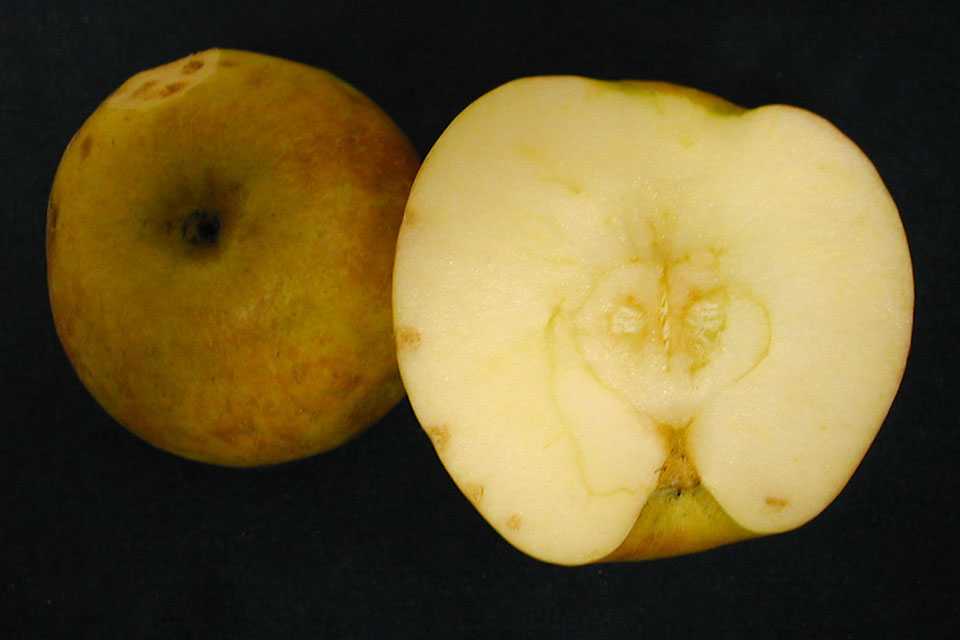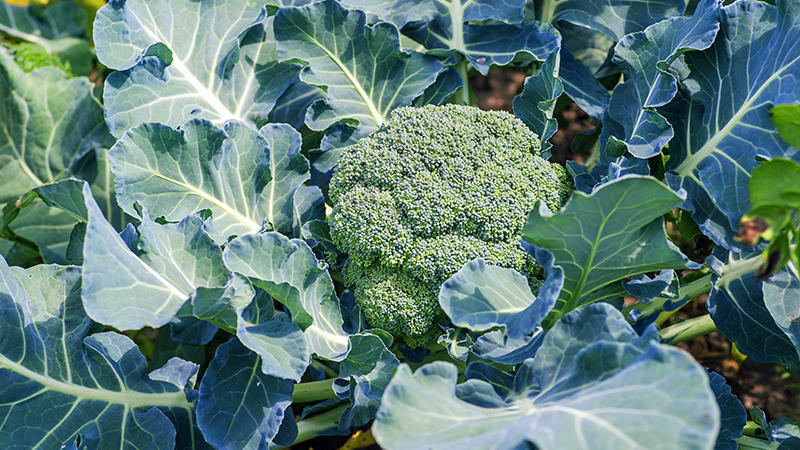Mitigate Bitter Pit in Your Apple Crops With Auxin and ABA

Bitter pit symptoms on ‘Honeycrisp’ apples.
Photo by Randolf Beaudry
Bitter pit in apples, particularly ‘Honeycrisp’, is generally thought to be associated with localized calcium deficit. With an end goal of improved delivery of the nutrient via the fruit’s xylem, researchers at Michigan State University (MSU) are now boasting two consecutive years of successful trials.
Three compounds — NAA (napththaleneacetic acid), ABA (abscisic acid), and IAA (indole acetic acid) — have had a positive effect on xylem functionality and bitter pit, according to Todd Einhorn, an Associate Professor in MSU’s Department of Horticulture.
Each of the materials significantly reduced bitter pit incidence on average approximately 65% in 2021 and 40% in 2022, Einhorn said at the annual meeting of the International Fruit Tree Association, citing the work of his graduate student, Chayce Griffith.
“We’re doing a pretty deep dive into this topic,” Einhorn says. Current strategies to mitigate bitter pit, including controlling biennial bearing and crop load and selecting rootstocks that do not augment the disorder, may improve the situation, “but they don’t erase bitter pit. It’s still here, and it can be really exceptional.”
XYLEM COLLAPSE
Calcium transport in-planta is limited to an apple’s xylem, which transports water and nutrients to the growing tissues of the fruit. Unfortunately, xylem in the fruit is under significant strain, beginning as early as 30 days after full bloom. Near the end of the season, relatively little to no xylem connections remain intact. In addition, because calcium also competes with other nutrients, including potassium, magnesium, and nitrogen, relatively little to no additional calcium is supplied to the fruit.
“Ratios of potassium, magnesium and/or nitrogen to calcium have explained approximately 70% of bitter pit incidence,” Einhorn says, citing the 2020 work of Penn State University Researcher Rich Marini.
Meanwhile, what has interested Einhorn is looking at auxin, specifically IAA, because that’s the native auxin in apple fruit and has the potential to improve xylogenesis, which is the creation of new xylem in the fruit to get the calcium to the fruit and peel.
“IAA has been shown in other crops to have this strong effect on xylem differentiation,” he says.
EFFECTS OF AUXIN AND ABA
Auxins, a group of plant hormones, are vital to calcium transport. IAA is well known to be involved in xylem differentiation as well as the flexibility of xylem tissue. Therefore, IAA promotes better vascular structures needed for effective calcium delivery. In addition, auxin mediates the transport of calcium.
Another plant hormone, ABA, increases calcium delivery directly by increasing xylem function and by regulating calcium genes. It may also act indirectly. ABA reduces transpiration, leading to the direction of more water and calcium to the fruit as opposed to leaves. It also indirectly inhibits shoot growth by closing stomata, which reduces gas exchange. Both of which result in better calcium supply to fruit.
Based on this information, Einhorn’s lab had a simple hypothesis, he says: Applications of ABA and auxins will increase xylem differentiation and the functional life of vascular tissues in fruit, which will, in turn, improve fruit calcium concentration and ultimately reduce bitter pit.
2021/2022 RESULTS
Experiments in 2021 used ‘Honeycrisp’ on G.11 rootstock (bitter pit-susceptible trees). IAA, NAA, or ABA was applied three times: 30, 45, and 60 days after full bloom (DAFB). Application timings were no earlier than 30 DAFB, so there was no thinning effect, and no later than 60 DAFB because xylem differentiation is complete by this point. Fruit were sampled and dyed to visualize xylem bundles at 86, 107, and 136 DAFB (approximately three weeks after the last treatment, two weeks later, and at harvest). Each material was tested at different rates.
As expected, overall vascular bundle functionality of non-treated ‘Honeycrisp’ diminished over time. In addition, vascular bundles were fewer closer to the calyx end of the fruit.
All three materials had a positive effect on xylem functionality and bitter pit. IAA significantly increased vascular bundles at the earlier sampling times (86 and 107 DAFB) in a rate-dependent manner (5, 10 or 20 parts per million [ppm]). NAA applied at a rate of 5 or 10 ppm was effective at all sampling times, but 20 ppm was toxic to the fruit. ABA applied at a rate of 75 and 150 ppm was also effective at increasing the number of functional bundles at 107 and 136 DAFB.
The data in 2022 were a “little less” than they had been in 2021, according to Einhorn. Still, “we had a pretty strong reduction in bitter pit — 45% to 27%, depending on the treatment. The best treatments were ABA and IAA.”
While promising for the second consecutive year, “there is still a lot to sort out,” Einhorn says.










